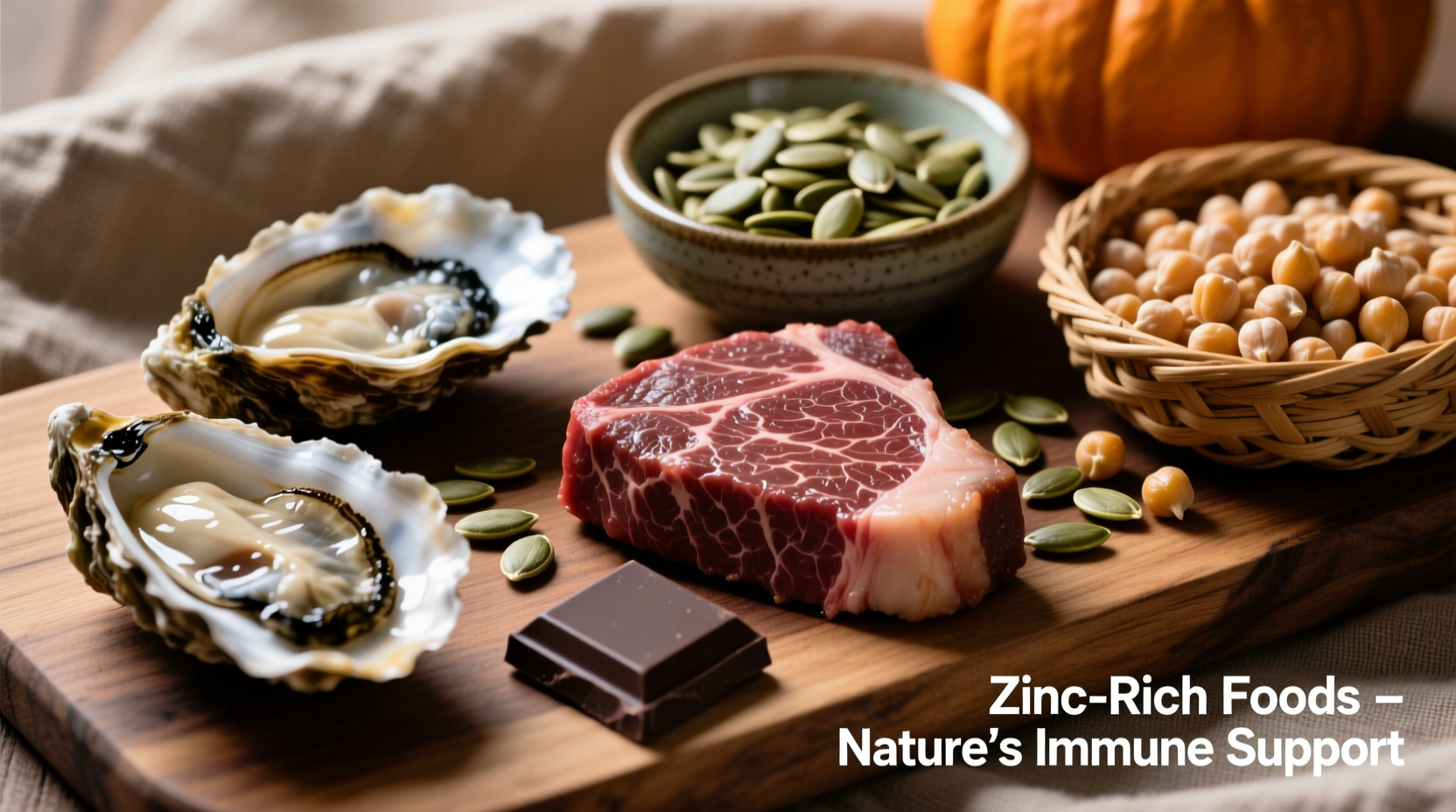Discover exactly which foods deliver the zinc your body needs to thrive. This comprehensive guide reveals the top natural sources of zinc ranked by nutrient density, with precise measurements from USDA-certified data. Whether you're addressing a deficiency, optimizing your diet, or simply curious about zinc-rich options, you'll find actionable information to make informed food choices today.
Why Zinc Matters More Than You Think
Zinc isn't just another mineral - it's a metabolic powerhouse involved in over 300 enzymatic reactions. The National Institutes of Health confirms zinc supports:
- Immune cell development and communication
- Wound healing at the cellular level
- DNA synthesis and cell division
- Proper sense of taste and smell
Most adults need 8-11mg daily, but certain populations require more. Pregnant women need 11mg, while lactating mothers require 12mg according to the NIH Office of Dietary Supplements. Vegetarians may need up to 50% more due to lower bioavailability from plant sources.
Top 10 Zinc-Rich Foods Ranked by Nutrient Density
Based on USDA FoodData Central measurements, these foods deliver the most bioavailable zinc per standard serving:
| Food | Serving Size | Zinc (mg) | % Daily Value |
|---|---|---|---|
| Oysters, cooked | 3 ounces | 74.0 | 673% |
| Beef chuck roast | 3 ounces | 7.0 | 64% |
| Alaska king crab | 3 ounces | 6.5 | 59% |
| Beef patty, 85% lean | 3 ounces | 5.3 | 48% |
| Lobster | 3 ounces | 3.4 | 31% |
| Pork shoulder | 3 ounces | 2.9 | 26% |
| Baked beans | 1/2 cup | 2.9 | 26% |
| Chicken dark meat | 3 ounces | 2.4 | 22% |
| Pumpkin seeds | 1 ounce | 2.2 | 20% |
| Yogurt, plain | 8 ounces | 1.7 | 15% |
Animal vs. Plant Sources: The Bioavailability Factor
Not all zinc sources are equally effective. Animal proteins provide zinc in a highly bioavailable form with 15-40% absorption rates, while plant sources typically offer 5-20% absorption due to phytates that inhibit zinc uptake. The National Library of Medicine explains this critical difference:
Key context boundaries: If you follow a plant-based diet, you'll need to consume 50% more zinc than the standard recommendations. Soaking, sprouting, or fermenting plant foods can reduce phytate content and improve zinc absorption by up to 60%, according to research published in the Journal of Agricultural and Food Chemistry.

Practical Zinc-Boosting Strategies for Your Daily Diet
Integrating zinc-rich foods doesn't require drastic changes. Try these chef-tested approaches:
For Breakfast
Add pumpkin seeds to your morning yogurt (1.6mg zinc per ounce) or choose fortified cereals. One serving of All-Bran with Extra Fiber provides 3.5mg zinc - nearly one-third of your daily needs.
Lunch Solutions
Replace standard chicken breast with dark meat (2.4mg per serving) or add baked beans to salads. A single cup of cooked lentils delivers 2.5mg zinc while providing plant-based protein.
Dinner Upgrades
Swap ground turkey for beef in recipes (beef contains 50% more zinc). For seafood lovers, just 2-3 oysters provide your entire daily zinc requirement. Don't overlook shellfish - a 3-ounce serving of crab delivers more zinc than a comparable portion of steak.
Avoiding Common Zinc Nutrition Mistakes
Many people unknowingly sabotage their zinc intake. The Academy of Nutrition and Dietetics identifies these frequent errors:
- Consuming calcium supplements with zinc-rich meals (calcium inhibits zinc absorption)
- Over-relying on whole grains without preparation techniques to reduce phytates
- Not pairing plant zinc sources with vitamin C-rich foods to enhance absorption
- Assuming all protein sources deliver equal zinc (dark meat contains 25% more zinc than white meat)
For optimal zinc absorption, separate calcium-rich foods from zinc sources by at least 2 hours. When eating plant-based zinc sources, pair them with citrus fruits or bell peppers to boost absorption through vitamin C's reducing effect.
When Food Isn't Enough: Recognizing Deficiency Signs
While food sources should be your primary zinc strategy, certain conditions may require supplementation. The World Health Organization identifies these deficiency warning signs:
- Persistent skin rashes that won't heal
- Frequent colds and infections
- Loss of appetite and unexplained weight loss
- Impaired sense of taste or smell
If you experience these symptoms despite eating zinc-rich foods, consult a healthcare provider. Certain medications like diuretics and antibiotics can deplete zinc stores, requiring dietary adjustments under medical supervision.
Which fruit has the most zinc?
Avocados contain the highest zinc content among fruits with 0.64mg per cup, though most fruits provide minimal zinc. For significant zinc intake, focus on animal proteins, shellfish, legumes, and seeds rather than fruits.
How can vegetarians get enough zinc?
Vegetarians should consume 50% more zinc than standard recommendations. Focus on pumpkin seeds (2.2mg per ounce), baked beans (2.9mg per 1/2 cup), lentils, and fortified cereals. Soaking, sprouting, or fermenting plant foods reduces phytates and improves zinc absorption by up to 60%.
What food has more zinc than oysters?
No common food contains more zinc than oysters (74mg per 3oz). Beef chuck roast comes second with 7mg per 3oz serving - about one-tenth the zinc content of oysters. Zinc supplements provide concentrated doses but should only be used under medical supervision.
Does cooking affect zinc content in food?
Cooking doesn't significantly reduce zinc content as it's a stable mineral. However, boiling can cause some zinc loss into cooking water. To maximize retention, use cooking methods like grilling, roasting, or stir-frying rather than boiling. The zinc in animal proteins remains highly bioavailable after cooking.











 浙公网安备
33010002000092号
浙公网安备
33010002000092号 浙B2-20120091-4
浙B2-20120091-4